Windows and doors are a significant element of very building. They affect the appearance of the building’s elevation, insulate from noise and protect against external conditions: heat and cold. Poor quality windows can cause an energy loss of as much as 18–25%. It is important to carefully select the right product.
How to choose the best one?
What to look out for?
Windows are classified according to the frame material. Wooden or PVC frames are the most commonly used in residential buildings. Each option has its pros and cons as shown in the table below.
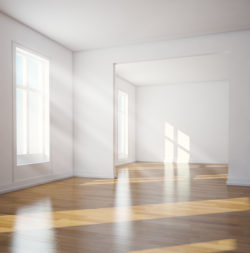
The energy efficiency of windows is rated using the heat transfer coefficient U, which is measured in W/m2K). In general, a lower U-value indicates a more energy efficient window.
It is important to consider the value of the whole window (Uw), instead of its individual elements such as the frame (Uf) or glass (Ug).
Good windows have a coefficient U = 1 and lower. For energy efficient houses it is recommended that U = 0,8–0,7 W/m2K.
Another significant parameter is the solar factor (g). It shows the amount of solar radiation that penetrates through the window into the house. The higher the factor the more energy is allowed through. For energy efficient houses it is recommended that the parameter is at least 50%. It cannot be too high for windows that are located on the south or south-west facing Elevations of buildings because the rooms will overheat in summer. In these cases shading is an important factor (blinds, shutters).
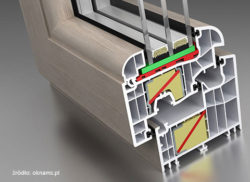
The profile of the window is also an important factor to consider. The thicker it is the more cells it can have . This boosts its insulating properties. Double glazed and triple glazed windows are the most popular in the market. In order to minimise heat loss some windows are filled with noble gases (eg. argon, neon, krypton or a gas mixture) between the layers of glass.
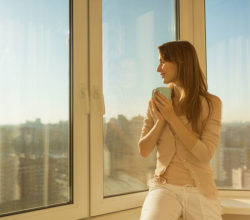
Another important parameter when choosing windows is soundproofing. The key element is glass with increased acoustic properties. Soundproofing of windows is measured by the so called weighted noise suppressing factor (Rw), measured in decibels (dB). The higher the factor the less noise gets through.
For example if the noise intensity outside of the building equals 55 dB and the barrier (wall, window) has Rw = 30 dB, the intensity of noise inside is 25 dB (55 – 30 = 25dB).
Soundproofing can be also improved by window seals and the type of mounting (e.g. by using special acoustic mounting foam).
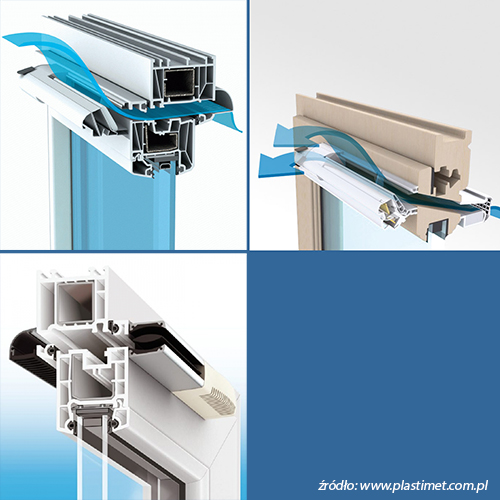
Providing ventilation after window replacement is very important. If the room previously had natural ventilation due to draughty windows and the new windows are very airtight it may lead to an increase in humidity and heat that often results in mould growing on walls or ceilings.
Since modern windows are very airtight the best solution is to install a ventilator.
Once installed there is no need for further intervention by the user. Some are triggered by relative humidity (humidity sensitive) and others by conditions outside and inside of the room (pressure sensitive and controlled manually).
Ventilators – how they work.
Most commonly air enters the bedrooms through the ventilators. From there it travels to so-called technical rooms (kitchens, bathrooms, toilets) and exits the premises through extraction vents. The used air is released outside. Appropriate positioning of the ventilators provides effective ventilation without transferring odours.
Ventilators can be bought along with new windows from the manufacturer/distributor or installed separately in existing windows. It is recommended that the installation is conducted by a specialist trained by the ventilator manufacturer. This will ensure that there’s a valid warranty and that the ventilating system is installed and operates correctly.
When buying a window, pay attention to the declaration of performance.
This document provides all the essential information about the energy performance and other parameters of the chosen window model.
There should also be a CE mark that confirms that the Declaration meets European Standards.
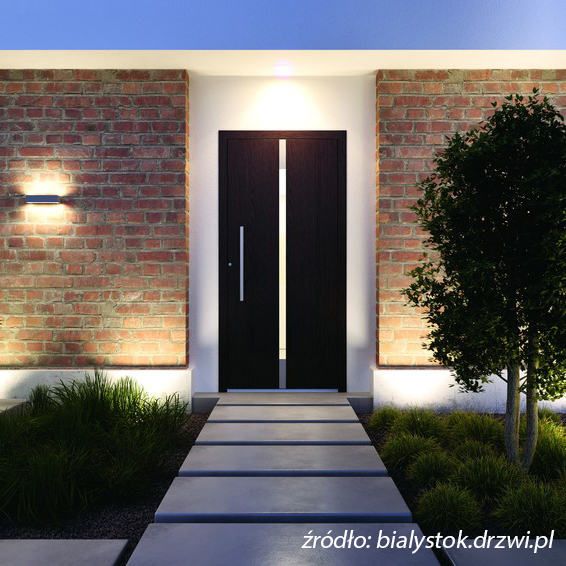
The front door protects the house from unwanted visitors as well as the cold. In addition to functional parameters such as height and width it is important to pay attention to the energy efficiency.
Analogically to windows the Energy efficiency of doors is measured by the heat transfer coefficient U. It is important to calculate the value of the whole door instead of its individual elements (eg. only the middle part that was insulated with special foam). In general, a lower U-value indicates a more energy efficient door. The coefficient should not be higher than 2,6 W/m2K, For Energy efficient houses it is recommended that U = 1,2 W/m2K or lower.
Acoustic insulation is also very important. On average it equals around 30 dB. It is worth checking if the door is rebated and if the frame and the door leaf are sealed.
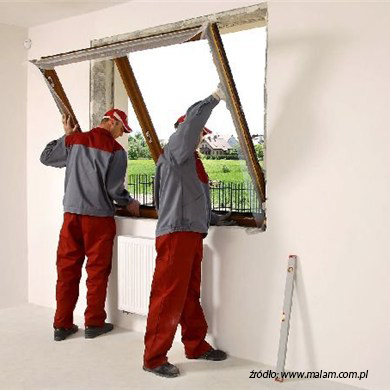
Regardless of how Energy efficient the windows and doors are the final result depends on the quality of the installation.
The surface where the window or the door meets the wall is called the thermal bridge. This is where heat escapes from the building. The bridge cannot be eliminated completely but it can be significantly reduced.
Therefore correct installation is crucial (proper seating, thermal foam, etc.). It is recommended to install windows using the layer assembly technique. This method helps significantly with improving the insulation parameters of the area between the wall and the window frame by using an extra layer of insulation. It is important to use the same technique on the entire elevation.
Annual costs of heating
Cost of purchasing and installing 7 windows
Annual savings due to lower energy consuption
How to choose? A guide to LEME
http://muratordom.pl
Wspierane przez:
We współpracy z: